During the 1930s, the United States was consumed by the harsh economic crisis of the Great Depression. The economy was plagued by bank failures and high unemployment rates. President Roosevelt’s New Deal economic policies were helping the nation recover from the crisis. By the end of the 1930s, the Great Depression was weakening, but Americans were still hindered by the poverty that the Depression had created.
In Europe, World War II started in 1939 with the German invasion of Poland. Germany invaded neighboring European countries and destroyed lives and property in its wake. Prior to the attack on Pearl Harbor, Roosevelt had promised to stay out of the war, but he wanted to support Britain in its struggle against German aggression.
Great Britain’s prime minister, Winston Churchill, requested Roosevelt’s assistance after sustaining a heavy loss of ships, planes, and other military equipment at the hands of Germany. Churchill asked Roosevelt for supplies to help Great Britain defend itself in the war.
Roosevelt wanted to keep his promise of neutrality, but he also wanted to be able to supply the British with supplies. His solution was the proposal of the Lend-Lease Act.
![]() Click on the document below to learn more about this act.
Click on the document below to learn more about this act.
Source: Lend Lease Act, United States Congress, Our Documents
The approval of the Lend-Lease Act shifted the U.S. economy into a wartime economy. Many businesses moved from the production of consumer goods to the production of war supplies and military vehicles. American companies began producing guns, planes, tanks, and other military equipment at an unbelievable rate. As a result, there were more jobs available, and more Americans went back to work.
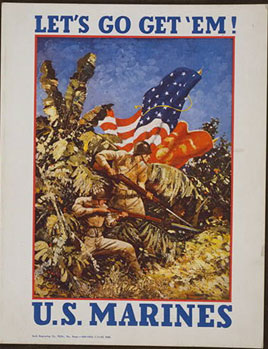
Source: Poster, Let’s Go get ‘em! U.S. Marines, Library of Congress
Immediately following the attack on Pearl Harbor in 1941, millions of men were called to duty. When these men joined the armed forces, they left behind millions of jobs. Instantly, the nation faced a labor shortage that was filled by workers who had previously been denied many employment opportunities.
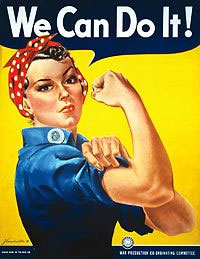
Source: Rosie the Riveter, American National Biography Online
Women entered the workforce at an unprecedented rate. More than six million women were a part of the workforce during World War II; for many of them, this was the first time they held jobs outside of the home. Women worked industry jobs that were traditionally held by men. Rosie the Riveter, pictured left, became an iconic figure for American woman. This fictional character represented the contribution of women in the workplace during the war.
During the war, women who worked in war industry jobs were referred to as "Rosies."
![]() The images below show women working in wartime industries. Scroll over each image to learn more.
The images below show women working in wartime industries. Scroll over each image to learn more.
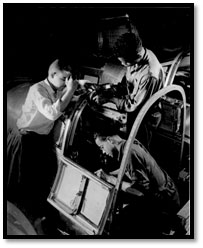
Source: Final assembly of the pilot's compartment is being made by these Negro workers in a large eastern aircraft factory. These youths went directly from a war training course to their jobs in this plant." Howard Liberman, National Archives.
The availability of new job opportunities in American factories also attracted African Americans. African Americans migrated to major manufacturing areas in the North as well as in the West. African Americans worked for government wartime agencies as well as war industries. Pictured left are three young men working on the cockpit of an airplane; this is an example of a wartime industry job.
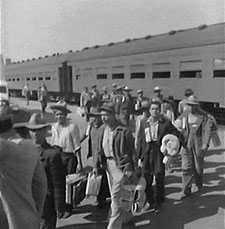
Source: Bracero Program, Vearthy, Wikimedia
The war also caused a labor shortage in the agricultural industry as many American farmers and farm workers enlisted in the military. In an agreement with Mexico, President Roosevelt created the Bracero Program. The program allowed Mexican laborers to immigrate to the United States temporarily to work on the nation’s farms and ranches. Between 1942 and 1964, more than four million braceros came to the United States under this program.
Quick Reflection: How did the U.S. entry into World War II present new opportunities for people in the United States?

The shift to wartime production helped to end the Great Depression by jump-starting the economy, but the government was still in need of money to fund its involvement in the war. The government created more programs and agencies to support the war effort, which led to more federal employees than the United States had ever employed. The government launched several campaigns that encouraged American civilians to help support the war.
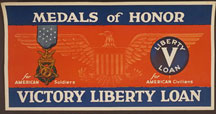
Americans were encouraged to purchase war bonds to help finance the war. Victory loan drives were held to encourage Americans to purchase bonds.
![]() This video is a televised appeal to Americans by Secretary of the Treasury Henry Morgenthau to help fund the war.
This video is a televised appeal to Americans by Secretary of the Treasury Henry Morgenthau to help fund the war.
According to Morgenthau, which was the easiest method for Americans to purchase war bonds?

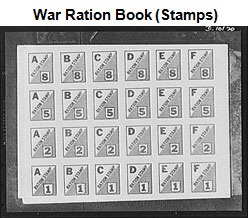
Source: FSA 8bO6554, Library of Congress
To ensure adequate supplies of raw materials and goods for both military and civilian needs, the government initiated a campaign for rationing in the American home front. Americans were asked to buy only what was necessary and to conserve and recycle what they could. By rationing, everyone got his or her fair share of goods.
Each family was issued a war ration book filled with coupons or stamps, which indicated how much of an item could be purchased. Families received books of stamps for items such as meat, butter, sugar, and canned goods.
Fuel was in short supply as it was needed both overseas and at home. Gasoline was rationed, and most cars had a gas ration sticker displayed on the driver window. Drivers were asked to carpool and observe speed limits in order to conserve fuel.
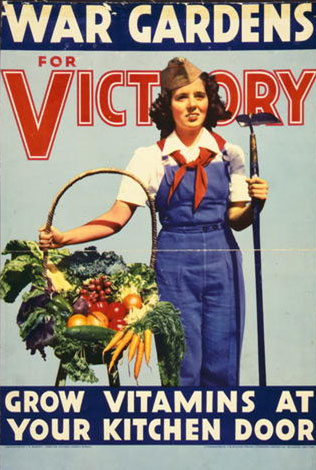
Source: War gardens for victory--Grow vitamins at your kitchen door, Library of Congress
Americans also produced their own food by planting victory gardens and canning or preserving what was grown. The victory garden effort garnered more than eight million tons of food for Americans during World War II.
Americans on the home front actively supported the war effort through these activities. Their contributions and sacrifices made a tremendous impact on the war.